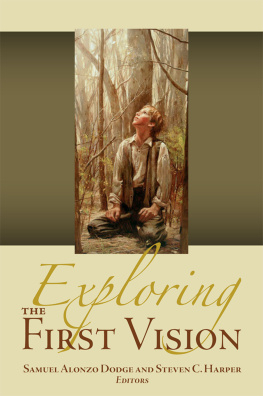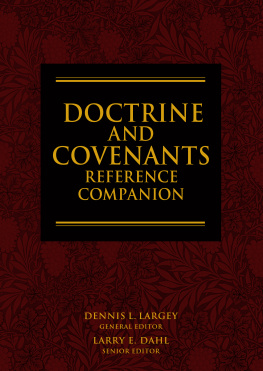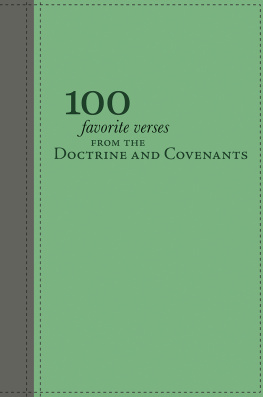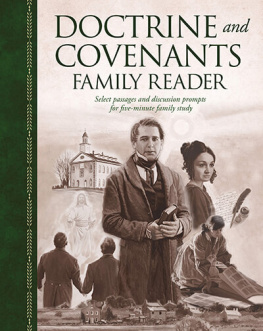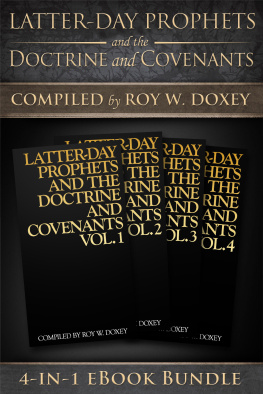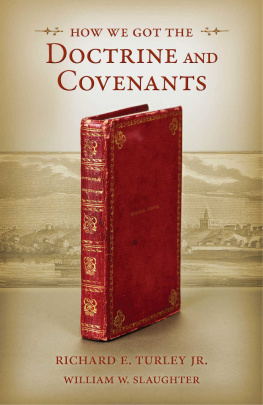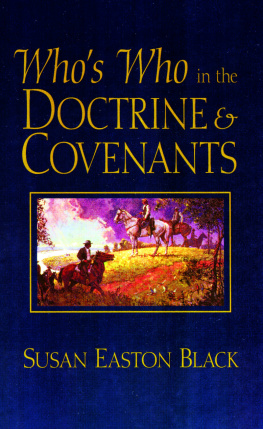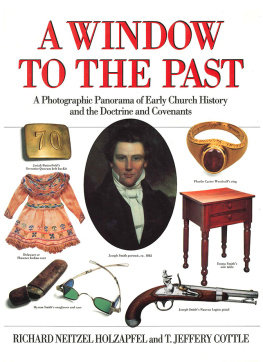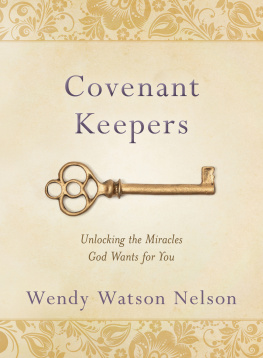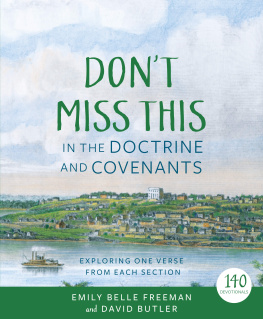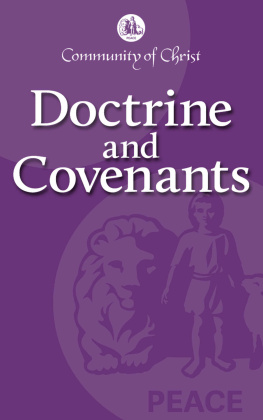All photos courtesy Intellectual Reserve, Inc., except as noted individually.
, Angel Moroni: Courtesy Kendra and Allan Daniel Collection. All rights reserved. Used by permission.
, Emma Hale Smith in later life: Courtesy Community of Christ Archives, Independence, Missouri.
, Lucy Mack Smith: Courtesy Community of Christ Archives, Independence, Missouri.
2008 Steven C. Harper
All rights reserved. No part of this book may be reproduced in any form or by any means without permission in writing from the publisher, Deseret Book Company, at permissions@deseretbook.com or PO Box 30178, Salt Lake City, Utah 84130. This work is not an official publication of The Church of Jesus Christ of Latter-day Saints. The views expressed herein are the responsibility of the author and do not necessarily represent the position of the Church or of Deseret Book Company.
Deseret Book is a registered trademark of Deseret Book Company.
Visit us at deseretbook.com
First printing in hardbound 2008
First printing in paperbound 2020
Library of Congress Cataloging-in-Publication DataHarper, Steven Craig, 1970
Making sense of the Doctrine & Covenants : a guided tour through modern revelations / Steven C. Harper.
p.cm.
Includes bibliographical references and index.
ISBN 978-1-59038-921-8 (hardcover); ISBN 978-1-62972-826-1 (paperbound); eISBN 978-1-60908-255-0 (eBook)
1.Doctrine and CovenantsCriticism, interpretation, etc.I.Title.
BX8628.H29 2008
289.3'2dc222008023952
Printed in the United States of America
Publishers Printing, Salt Lake City, UT
10987654321
Preface
It was very early one morning when I felt I finally understoodDoctrine and Covenants 66. I had long been intimate with itsthirteen verses, studied related documents in the LDS ChurchHistory Library and the Community of Christ (formerly RLDS)Archives, and painstakingly read the original journals of WilliamMcLellin, the man to whom the Lord spoke in section 66. But Iwrestled with the revelation for a long time. Then, in an instant,it opened to me. The epiphany was well worth the price paid instudy. I understood William McLellin, I comprehended the Savior'shighly personalized words to him, and because of that, I feltempowered to apply them to myself as well.
As a professor of Church history, I have studied the Doctrineand Covenants this way for many years. I earned graduate degrees inhistory to better understand the period in which most of therevelations were given. I learned to read the handwriting of thosewho wrote the early manuscripts, so I could pore over them often. Icontinue to study the records left by the people through whom andto whom the Lord spoke His revelations, and it is my privilege toassist in editing revelation manuscripts for publication in theJoseph Smith Papers. I have spent countless hours reading andthinking about the texts of the revelations. All this is thebeginning, not the end of my inquiry, and I invite readers to joinme in the endlessly interesting and deeply satisfying quest.
Not long ago I had a candid conversation with a scholar ofAmerican religious history. "Reading the Doctrine and Covenants islike reading a dictionary," he confessed. He was frustrated, asmany readers seem to be, by the challenges of making sense of theisolated sections. Most are free-standing texts, unconnected tothose surrounding it. In comparison, the Book of Mormon containsdozens of revelations, but narrators, beginning with Nephi'sintroduction to readers in the book's very first words, do the workof creating connective tissue. Nephi and others lead readersthrough the revelations, seeing them safely from one to the nextand explaining their significance in between. With few exceptions,there is little of that kind of narrative in the Doctrine andCovenants.
Each revelation is the heart of a story with no beginning or endin the book of scripture itself but which the Savior deemedimportant enough to address from heaven. Reading the sections isakin to joining a conversation that is well underway. Payingcareful attention enables readers to make judgments about what theymissed, but conclusions based on such judgments may be erroneousand hard to correct. Such mistaken conclusions have beenperpetuated by influential commentaries or reinforced throughgenerations of retelling. In such cases, the revealed texts maybecome casualties to traditional interpretations, some of whichhold onto life tenaciously.
But deeper and inspiring understanding can be ours when we cometo know the background questions or problems the text was revealedto resolve. In most cases the story of each revelation can berecovered from the historical record. Returning to the analogy ofjoining a conversation already underway, each of the sections is ananswer or set of answers to a specific question. The "revelationswere received in answer to prayer, in times of need," says theExplanatory Introduction, "and came out of real-life situationsinvolving real people." The more we learn about those situationsand people, the better we understand the Doctrine and Covenants.Knowing the questions that started the conversation makes theanswers dramatically more understandable and interesting. Considerhow much richer a conversation would be for someone briefed inadvance about the personalities and issues in the discussion. Thisbook describes the questions, problems, and personalities thatshape the texts, helping us to understand more fully why therevelations say what they say in the way that they say it.
What we sometimes call contextfor example, that aconversation took place in 1830 in Ohio in so-and-so's house andthat one of the participants was John Johnsonis lessilluminating than discovering specific information about therelevance of that place and person to the conversation. Why there?Why then? Why that individual?
The text of each revelation is even more important. Evenif we join a conversation without context, much can be gained bylistening carefully. Thus, the revelations themselves deserve ourdeepest attention. What do they say? How do they say it? Whatdoctrines do they declare? What covenants do they make? What dothey command, prophesy, and promise? Each revelation is coherent,with an internal logic that teaches us the Lord's mind and will. Wesometimes cut the revelations into little pieces and comment oneach slice. That can help, but it can also hinder our efforts tolisten to the Lord. We can perhaps be too quick to comment and tooslow to listen or hearken, as the revelations repeatedly command.Then-Elder Gordon B. Hinckley urged the Saints to "let the Lordspeak for Himself to you." That canbe done in many ways, including through the study of eachrevelation as a whole. The Lord's logic, the rationale by which hecommunicates his mind and will, may be lost when the revelationsare cut into pieces.
Assessing the outcomes of each revelation comes next. It is onething to learn what each revelation says, and another to learn whateach one does. For example, in section 66 the Lord gave WilliamMcLellin more than twenty commandments and promised specificoutcomes if he obeyed. Did the commandments and promises motivateMcLellin to obey? If so, did he receive the promised blessings?Assessing the fruits of a revelation is a profound way toappreciate its powerthe difference that it did and can make.The revelations in the Doctrine and Covenants bore fruit when theywere given and continue to do so. They change the eternal destiniesof familiesof worlds without end. They are powerful.
Imagine that each revelation is a work of art in a museumgallery. We can appreciate the works of art on their own, to besure, but walking through the gallery with a guide enriches theexperience. The guide can direct our attention to the composition,colors, and design of the art works, note how each piece wasinfluenced by the period in which it was created, and makesuggestions for interpretation. If the revelations recorded in theDoctrine and Covenants are the masterpieces, this book may beconsidered a guide to those masterpieces. It was written by astudent of the scriptures who loves the revelations and longs tohelp others appreciate them more fully.


